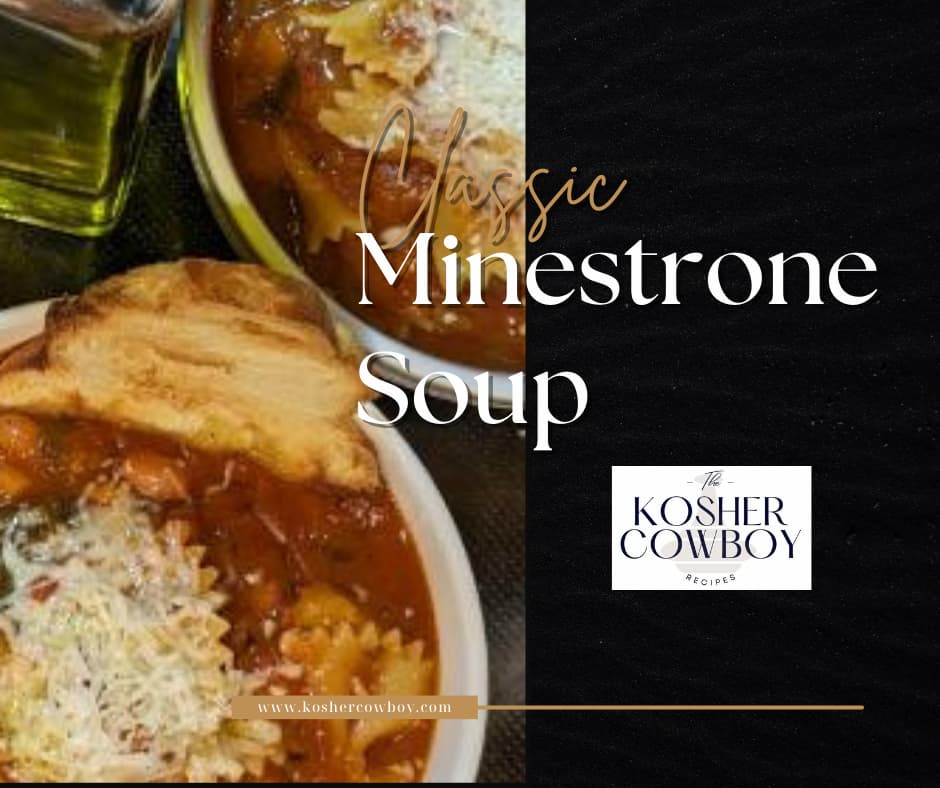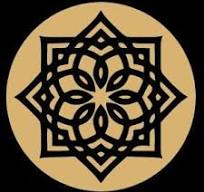Jump to Recipe
Print Recipe
Classic Minestrone Soup
A Symphony of Tastes: Classic Minestrone in the Missouri Heartland
Classic Minestrone soup, a beloved and versatile dish, beckons us into a world of culinary richness and warmth. Hailing from ancient Rome, the name ‘minestrone,’ rooted in the Latin word ‘minestrare,’ meaning ‘to serve,’ encapsulates its humble beginnings as a nourishing ensemble of seasonal vegetables, grains, and legumes. This hearty creation, born out of necessity, has evolved into a culinary masterpiece celebrated for its adaptability and regional diversity. A vibrant medley of flavors and textures, minestrone transcends cultural boundaries, offering a communal experience that speaks to the heart of shared meals.
Over the centuries, minestrone’s journey across the Italian landscape and beyond has been marked by adaptation and creativity. Each region infuses its distinct character, resulting in a multitude of variations that reflect local produce and cultural traditions. From its modest beginnings to its esteemed status as a beloved classic, minestrone has become a symbol of resourcefulness, warmth, and the communal joy of shared meals.
Photo credit: Carlos Moreno/KCUR 89.3
Embarking on a journey through time and flavor, classic minestrone soup emerges as a culinary masterpiece, blending the warmth of Missouri memories with the refined touch of Italian sophistication. Join me in savoring the nostalgia, where the shores of a Missouri lake frame the backdrop of timeless traditions and the company of dear Italian friends in the cosmopolitan hub of Kansas City.
Classic Minestrone’s Homage to Missouri Roots
In the heartland of Missouri, where winters paint the landscape with a gentle chill, classic minestrone soup takes center stage as a timeless comfort. This robust dish, with its harmonious blend of vegetables and pasta, serves not just as a culinary delight but as a tribute to the enduring spirit of the Midwest. Childhood memories by the lake come alive in every simmering pot, infusing the kitchen with the essence of home.
The backyard and lake behind my childhood home in Kansas City
Kansas City’s Italian Tapestry: A Mosaic of Minestrone Styles
Contrary to the stereotype of Kansas City being a cow town, this metropolis stands as a vibrant canvas adorned with diverse cultures, each contributing to the city’s rich tapestry. Amidst this cultural mosaic, a sizable Italian population emerges as a prominent thread, weaving culinary excellence into the very fabric of the community.
Having the privilege of residing in this thriving city, I discovered a magnetic pull towards the city’s Italian community, likely influenced by my DNA, which reveals a significant Italian heritage. Surrounded by a close-knit group of Italian friends, I found myself in the heart of Kansas City, where skyscrapers complement the landscape, witnessing the artistry of minestrone creation unfold.
My Italian brothers and me, the Kosher Cowboy (circa 1993). The waitress photobombed us.
Each friend’s mom or nonna brought their distinctive touch to this beloved dish, elevating it beyond a mere recipe to a personalized culinary masterpiece. The lively kitchens resounded with the rhythmic melodies of chopping, simmering, and laughter, occasionally punctuated by a good-natured curse word. From the aroma of sautéed garlic to the rhythmic dance of vegetables meeting the pot, these kitchens were vibrant stages where the magic of minestrone unfolded.
Photo credit: ENOTECA MARIA
Kansas City’s Classic Minestrone Soup
As the savory concoctions simmered, anticipation filled the air, promising a symphony of flavors that mirrored the diverse cultural influences present in Kansas City. The long-established Italian restaurants of Kansas City, such as Garozzo’s, Cascone’s Grill , and Jasper’s, have been key players in nurturing this cultural fusion. Their commitment to authenticity and culinary excellence has not only shaped the city’s dining scene but has also become a testament to the enduring influence of Italian heritage.
Gathering around shared tables, the variations of minestrone were as diverse as the friendships that enriched my Missouri upbringing. Each bowl held a unique story, a fusion of Italian heritage, Midwest warmth, and the shared DNA that bound us together.
Italians of Kansas City (circa 1920s)
The city’s Italian community, alongside these iconic establishments, not only brought culinary excellence but also shared a profound sense of camaraderie and tradition, turning every meal into a celebration of cultural diversity and flavorful unity. In essence, Kansas City defies stereotypes, revealing itself as a dynamic hub where diverse cultures, influenced by both DNA and longstanding establishments, coalesce to create a harmonious culinary experience. The Italian influence, guided by a genetic connection and enriched by the legacy of renowned restaurants, adds a layer of depth and richness to the city’s gastronomic tapestry, transforming it into a welcoming haven for those seeking not just a meal but a journey through flavors and traditions.
Bowtie Elegance: A Personal Flourish to Classic Minestrone
In the spirit of innovation and personalization, a subtle twist was introduced to the classic minestrone recipe. Inspired by the playful comment of my wife, who fondly dubbed it a “chunky vegetable soup with beans and pasta thrown in,” I decided to elevate the presentation. The conventional pasta was gracefully replaced by bowtie pasta, adding a touch of sophistication and visual allure to the already cherished recipe.
Crafting Memories with Classic Minestrone
As the classic minestrone simmers on the stove, memories of Kansas City’s Italian kitchens blend with the warmth of Missouri winters. The careful choreography of vegetables, broth, and now, the bowtie pasta, creates a culinary symphony that transcends time and culture. Every ladleful is a nod to the friendships, flavors, and sophistication that have shaped my culinary journey.
A Culinary Sonata of Tradition and Refinement
In every bowl of classic minestrone, the echoes of Missouri’s winters harmonize with the diversity of Kansas City’s Italian culinary heritage. The bowtie pasta, a subtle nod to sophistication, adds an elegant note to the cherished recipe. Classic minestrone remains not just a dish but a culinary sonata, a celebration of memories and flavors that stand the test of time.
Buon appetito!
Classic Minestrone Soup
#wprm-recipe-user-rating-0 .wprm-rating-star.wprm-rating-star-full svg * { fill: #ffce44; }#wprm-recipe-user-rating-0 .wprm-rating-star.wprm-rating-star-33 svg * { fill: url(#wprm-recipe-user-rating-0-33); }#wprm-recipe-user-rating-0 .wprm-rating-star.wprm-rating-star-50 svg * { fill: url(#wprm-recipe-user-rating-0-50); }#wprm-recipe-user-rating-0 .wprm-rating-star.wprm-rating-star-66 svg * { fill: url(#wprm-recipe-user-rating-0-66); }linearGradient#wprm-recipe-user-rating-0-33 stop { stop-color: #ffce44; }linearGradient#wprm-recipe-user-rating-0-50 stop { stop-color: #ffce44; }linearGradient#wprm-recipe-user-rating-0-66 stop { stop-color: #ffce44; }5 from 1 vote
Prep time: 20 minutes minutes Cook time: 40 minutes minutes Total time: 1 hour hour Servings: 6 bowls
#wprm-toggle-switch-563308349 input:checked + .wprm-toggle-switch-slider { background-color: #417505 !important; }Cook ModePrevent your screen from going dark
PRINT RECIPE
PIN RECIPE
DESCRIPTION
Indulge in a delightful symphony of flavors with this unique Vegetarian Minestrone. Crafted with care, this recipe embraces a medley of preferred veggies, bowtie pasta, and wholesome pinto beans, harmonizing them with aromatic herbs and zesty tomatoes. A culinary journey awaits as you infuse the pot with the richness of vegetable broth and the subtle kick of red pepper flakes. Topped with a finishing touch of lemon juice, this minestrone dances elegantly on the palate. Whether you savor it as a standalone delight or opt for a sprinkle of Parmesan, this personalized creation promises a bowlful of warmth and satisfaction. Buon appetito!
INGREDIENTS 1x2x3x▢ 3 tablespoons preferred olive oil▢ 1 medium yellow onion (finely chopped)▢ 2 medium carrots (peeled and diced)▢ 2 celery ribs (finely chopped)▢ A pinch of salt▢ 1 cup mix of seasonal veggies (potatoes, yellow squash, or zucchini)▢ 4 cloves garlic (minced)▢ ½ teaspoon each dried oregano and thyme▢ 1 large can (28 ounces diced tomatoes with their juice)▢ 4 cups vegetable broth▢ 2 cups water▢ 1 teaspoon fine sea salt▢ 2 bay leaves▢ A pinch of red pepper flakes▢ Freshly ground black pepper▢ 1 cup bowtie pasta▢ 1 can (15 ounces pinto beans, rinsed and drained)▢ 2 cups fresh greens (baby spinach, kale, or collard greens)▢ 2 teaspoons lemon juice▢ Optional: Freshly grated Parmesan cheese
ul.wprm-advanced-list-7527 li:before {background-color: #687796;color: #ffffff;width: 18px;height: 18px;font-size: 14px;line-height: 14px;}INSTRUCTIONS onoffBegin with 3 tablespoons of olive oil in a large pot over medium heat. Add chopped onion, diced carrots, finely chopped celery, tomato paste, and a pinch of salt. Cook until veggies soften (around 7 to 10 minutes). Add seasonal veggies, minced garlic, dried oregano, and thyme. Stir frequently, letting the aromas mingle for about 2 minutes. Pour in diced tomatoes, vegetable broth, and water. Add salt, bay leaves, red pepper flakes, and plenty of black pepper. Increase heat to medium-high, bring to a boil, then partially cover, maintaining a gentle simmer. After 15 minutes, add bowtie pasta, pinto beans, and greens. Simmer uncovered for 20 minutes or until pasta is al dente and greens are tender. Remove from heat, discard bay leaves, stir in lemon juice and remaining olive oil. Taste, adjust seasoning, and serve. Optional: Top with Parmesan cheese.
NotesDairy-Free/Vegan Option: Elevate this dish to a plant-based delight by skipping the Parmesan garnish.
Gluten-Free Twist: Embrace a gluten-free version by swapping the pasta with your preferred sturdy gluten-free noodle. I opted for DeLallo’s Whole-Grain Rice Shells, and they seamlessly complemented the flavors.
Parmesan Pointer: While most Parmesans aren’t technically vegetarian due to animal rennet, fear not! Consider vegetarian Parmesan options like Whole Foods 365 and BelGioioso brands for a cruelty-free culinary experience.
NUTRITIONServing: 1bowlCalories: 145kcalCarbohydrates: 18gProtein: 3gFat: 8gSaturated Fat: 1gPolyunsaturated Fat: 1gMonounsaturated Fat: 5gSodium: 1048mgPotassium: 289mgFiber: 3gSugar: 4gVitamin A: 6059IUVitamin C: 27mgCalcium: 87mgIron: 1mg
DID YOU MAKE THIS RECIPE?Tag me @gokoshercowboy and hashtag it #gokoshercowboy
Click here for more Italian recipes.
0Share this:Click to print (Opens in new window)Click to share on Pinterest (Opens in new window)Click to share on Facebook (Opens in new window)Click to share on Twitter (Opens in new window)Click to share on WhatsApp (Opens in new window)MoreClick to share on Telegram (Opens in new window)Click to share on Tumblr (Opens in new window)Click to share on Pocket (Opens in new window)Click to share on Reddit (Opens in new window)Click to share on LinkedIn (Opens in new window)Like this:Like Loading…
Related









Ohr HaChaim Yomi – Shemini